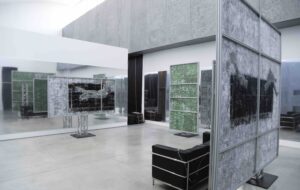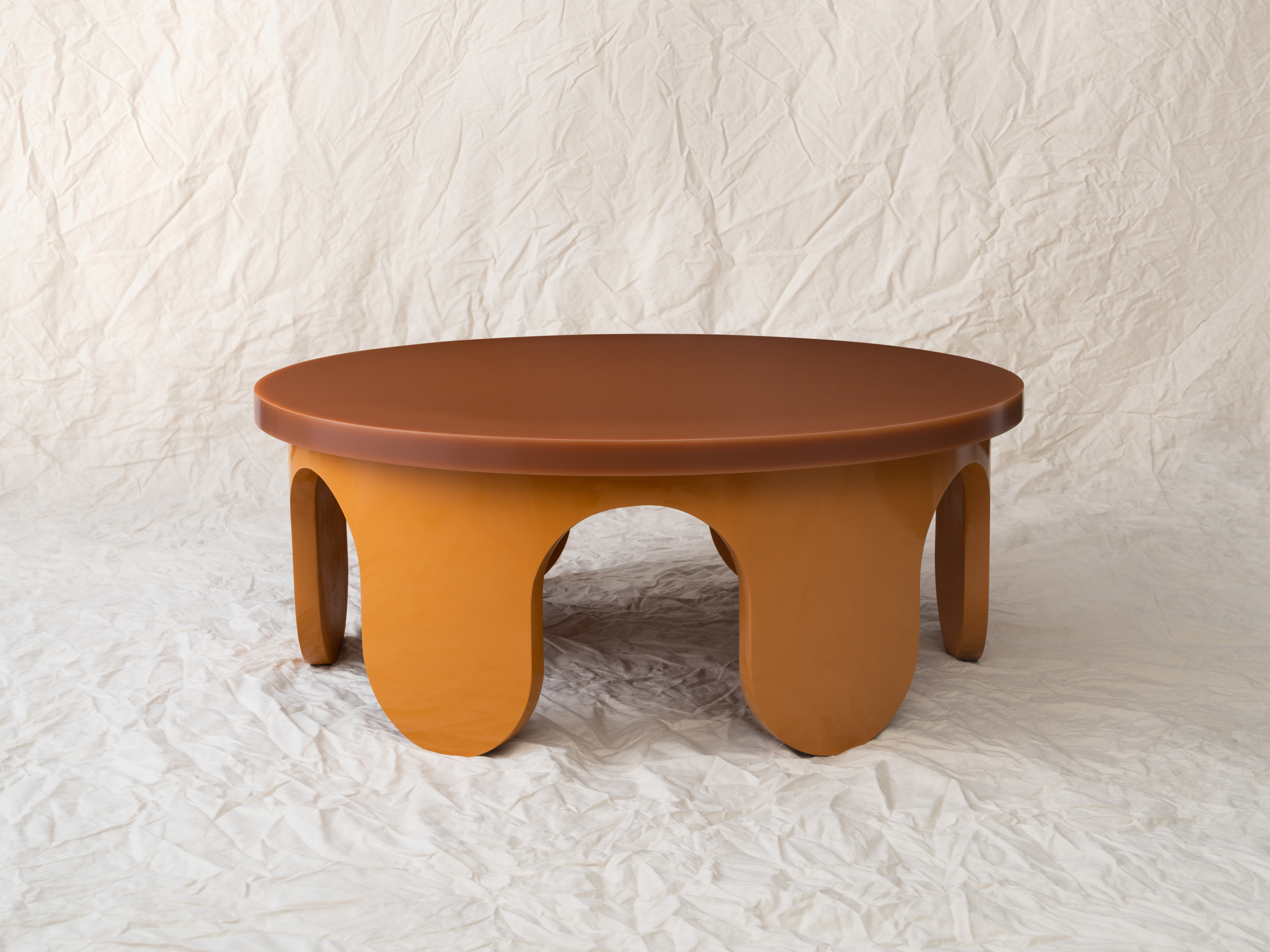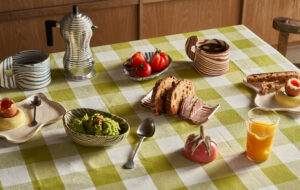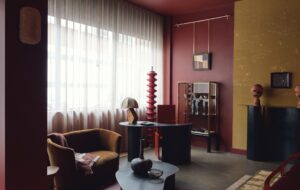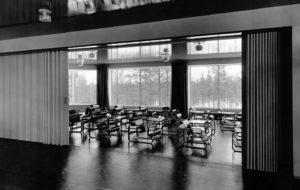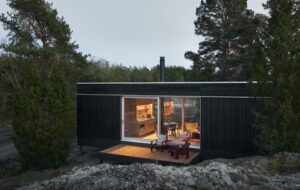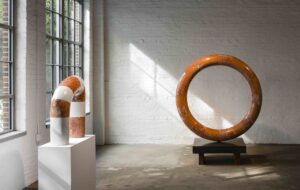

words Justin McGuirk
Brazil’s slum culture has become fashionable, from capoeira and the “favela chic” of the Campana brothers’ furniture to the brutal glamour of Fernando Meirelles’ film City of God. So when the Audi Design Foundation offered to take us to Rio de Janeiro to cover a design project it was sponsoring in the favelas, we wondered whether it was some kind of publicity stunt.
It sounded slightly frivolous to talk about design in the context of such social and economic problems. Did this project really have the potential to improve people’s lives or was it an example of misplaced charitable intentions? What would Rio’s poor make of it?
Early this year, the Audi Design Foundation – the car manufacturer’s charity arm, which offers financial support to young designers – went to Brunel University, outside London, with an idea for a competition. Some of the UK’s brightest product design students were asked to create a product that would improve quality of life in the favelas. The project was called Designs of Substance, and it offered the winning student the chance to develop a prototype in Rio with the feedback of the people for whom it was intended. As an added stimulus, the Foundation brought in a heavyweight judging panel that included designers Wayne Hemingway and Richard Seymour.
The aim of the project, educationally, was to teach empathy: to design for the needs of a community as far removed as imaginable from one’s own. But the brief couldn’t have been more nebulous. Improve quality of life. Just how were a group of students in Surrey, none of whom had ever been to Brazil, supposed to improve quality of life in the favelas? Especially as they were, in a sense, competing with people who have to be creative to survive, people who have built their own cities out of whatever they could lay their hands on.
Twenty per cent of Rio’s population live in favelas, of which there about 500 swelling the city’s edges. As a target audience they present a particular challenge for designers in that most of them do not live in desperate poverty. They do not want for TVs and stereo systems. Their problems stem chiefly from being disenfranchised: they have very little infrastructure, they have to steal their electricity, they have no public healthcare, no police and their communities are controlled by drug dealers. All of this had to be explained to the students, and a resident of Rio’s Quitungo favela was flown in to guide them towards the kinds of areas ripe for improvement. She explained how people suffer from overcrowding and a lack of privacy, and how they struggle with an improvised urban fabric that has steep pathways with open sewers winding up hillsides.
The shortlisted proposals included space-saving devices, a pullout privacy screen, a paving system made out of recycled tyres and, interestingly, a televised forum for anonymous discussion called Favela TV. But the winning design, by 19-year-old Nathan Murfie, was a hanging wall garden made out of recycled materials, from mineral water bottles to drainage pipes. It wasn’t slick or sexy; it was picked precisely because it matched the improvisational ethos of the favelas, giving people the potential to transform their environments with the kind of materials that litter their streets.
That this particular project should have won suggests something about our perception of the third world (for in Rio, the first and third worlds rub up against each other). Favela dwellers are champion recyclers – they reuse 95% of drink cans. But the idea that they would want to use recycled rubbish to adorn their homes might underestimate how much they aspire to basic middle-class standards of living.
There are no gardens to speak of in the favelas, and no public green spaces – every square foot is a square foot of precious living space. So the idea of creating vertical gardens was potentially a good one, allowing people to decorate their homes and, if they grew herbs and vegetables, giving them an even greater degree of self-sufficiency. Of course, if the faveladors wanted to grow their own food, the chances are they would have come up with a way to do it. But it turned out that there were other advantages to the scheme that they appreciated far more.
In Quitungo, a favela on the north-eastern edge of Rio, a good two dozen people, including a local politician and a small-time pop star, had shown up at the local community centre to watch Murfie present his idea. There was a palpable sense of curiosity in the wall-less room as he began stringing plastic bottles together. But with the rain dripping through the roof and the wind ruffling his diagrams, an anticlimax threatened. There was some polite nodding from the audience, followed by a gradual dawning of the idea – the bottles can be slotted into each other, very clever, and what are those holes for? For things to grow out of? I see, and you can also make these out of old tyres? At one point Murfie pulled out an air-bed full of holes to demonstrate just how laterally the idea stretched, and soon expectancy had turned into enthusiasm.
The director of the cultural centre announced that he would pilot the scheme, using Murfie’s illustrated posters to teach the local children how. “It’s very interesting,” added the local politician, “because we have these products in the garbage, so we don’t need to buy them. I’ll ask my wife and see if we can do it in our house.” “The project is 100% excellent,” chimed in the pop star. There were pats on the back all round, but it was hard to gauge just how genuine their enthusiasm was or whether it was their way of showing gratitude for the kind of thought and attention that, as they kept pointing out, their own government completely fails to spare on the favelas. At least they did not – which was one worry for the foundation – appear to feel patronised. Although perhaps they expected more from a project sponsored by a major multinational. “The community always wants more,” said the centre’s director, “especially money. But these kinds of things open people’s minds.”
The project’s main appeal seemed to be as an initiative for young people. One of the greatest concerns for local parents is keeping their children off the streets and away from the lure of easy money with the teenage drug rings. So the centre provides capoeira and samba classes, almost as much for distraction as for education. The gathering genuinely appreciated how accessible the project was, and recognised the scheme as one that could not only help young people be creative but also encourage them to take pride in their immediate surroundings.
A couple of days later, Murfie was presenting the project in Rocinha, the largest favela in Brazil. Rocinha, which is home to between 100,000 and 160,000 people – no-one really knows – has grown up a hillside in the south-west of Rio, and brushes up incongruously against the city’s two wealthiest neighbourhoods. Despite looking painfully crammed and ramshackle, Rocinha is not a depressing place – it has the medieval feel of a medina, and it hums with life. There are even signs of ordinary high-street commerce, like the odd bank and a tiny McDonald’s franchise.
Towards the top of the hill, a group of young artists were finding a different appeal in Murfie’s presentation from the group in the community centre. It was the fact that, with sufficient planting, the hanging gardens could not only keep homes cool but add a layer of sound insulation that excited them. The sheer proximity of the neighbours, the thinness of the walls and the fact that windows are often only nominal affairs all mean that one of the most difficult things about living in a favela is coping with the noise. “You don’t know what it’s like having neighbours playing different songs at the same time all day long on a Saturday,” says Ricardo Eloi, a painter and graffiti artist. The group also had their own ideas about how the planters could be made. As well as using bottles, tyres and drainage pipes, they suggested using coconuts, which are sold to tourists on the beaches by the thousands every day and then heaped up in bright orange bins.
Again the response was difficult to interpret: the group was openly positive about the project but, with Murfie standing there, the desire to be hospitable may have prevailed over the temptation to pick holes. They liked the idea that they could grow their own vegetables (although one of them preferred the idea of growing his own marijuana) but rather than implementing the scheme in their own homes, they tried to imagine creating a community garden. They felt an accessible pilot scheme would be the best way for it to catch on in the broader community.
Feeling like an envoy from the developed world made Murfie’s presentations tougher than any he will have to give in his continuing education. “I was a little apprehensive because it could have seemed I was patronising them,” he says. But he felt encouraged by the responses in Quitungo and Rocinha, and feels confident that at least a few of the people he met will try out his ideas. “I could have come over and found this kind of thing already existed but it didn’t, and it was well received, so I’m happy. These people are really proud, and if they could get competitive about growing things that would be great.” As to whether his project will improve life in the favelas, that was clearly never the Audi Design Foundation’s main priority. “It would be pretty rare to get a usable end product out of a student design competition,” admits Wayne Hemingway. The Foundation’s ultimate aim, and certainly Brunel’s, was to provide one student with a unique learning experience. In that respect, Hemingway sees the competition as an exemplar: “This was as close to real as the students are going to get. And it lacked the cynicism of a marketing department, which is very different from most commercial companies doing a design competition.”
Both groups of locals who met Murfie were quick to recognise what an opportunity he’d been given. “Could Audi sponsor a similar competition in Quitungo?” asked someone at the cultural centre. “I want to enter a competition where I can win and spend a week in England,” said one of the artists.
Murfie plans to apply for an Audi Design Foundation grant to develop the project, while the Foundation is considering whether to go back to the favelas next year with a similar scheme. The people there appreciated the dialogue but, inevitably, what they really wanted was money to support their own initiatives, to buy computers for their schools and to fix the roof of the cultural centre. One has to ask how much they really gain from having one privileged student flown over with the ostensible purpose of helping them when in fact it is to learn from them. The Foundation’s representative on the trip, Jody Chapman, concluded that if it was to go back next year it would have to be with the right question – something less arrogant than “how can we improve their lives?” “At this point,” says Chapman, “I have no idea what that question is.”

